
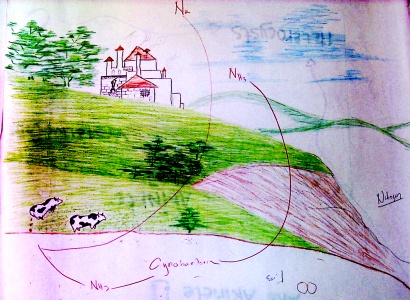
Jennifer covers the nitrogen cycle.


Valerie, working solo, explains the different cell types in the cyanobacteria Nostoc
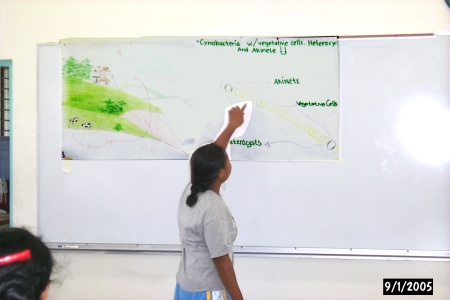
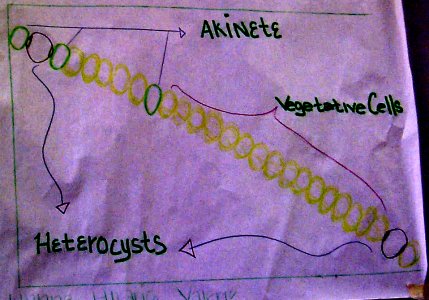
Jayvina explains the moss life cycle replete with a comparison of male and female moss gametophytes to human biology. Partners Marlinda and Kimberly look on.
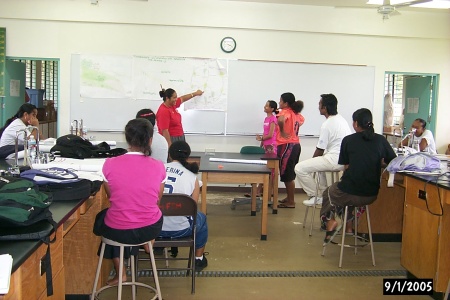
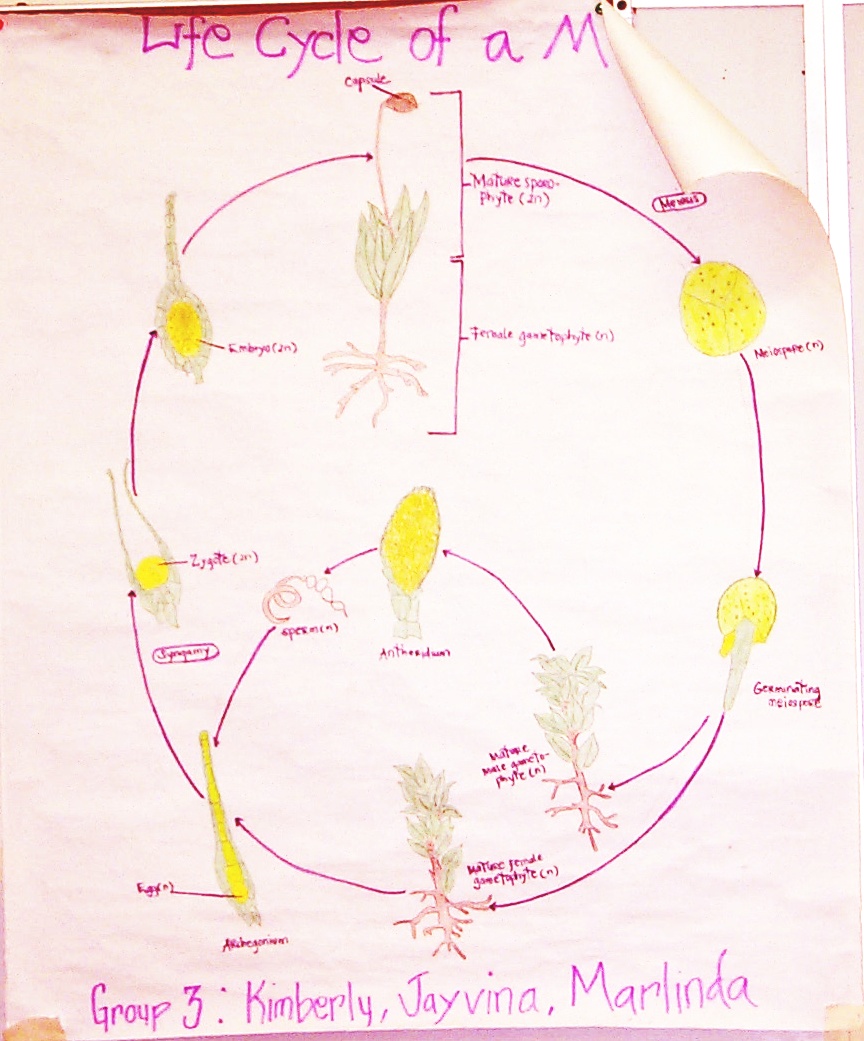
George describes lycopodium. Likiaksa, looking at the chart, cover the lycopodium life cycle, a life cycle similar in some respects to that of the mosses.
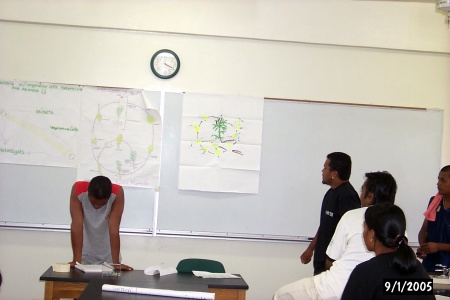
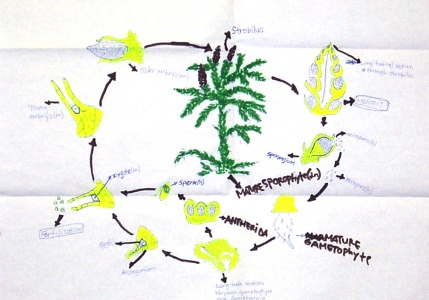
Wayner covers the life cycle of selaginella.

Evangileen takes center stage to handle the morphology of lycopodium, her partner remaining on the far right.
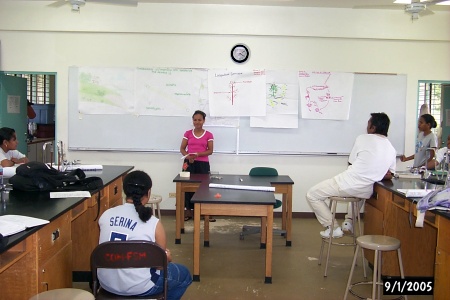
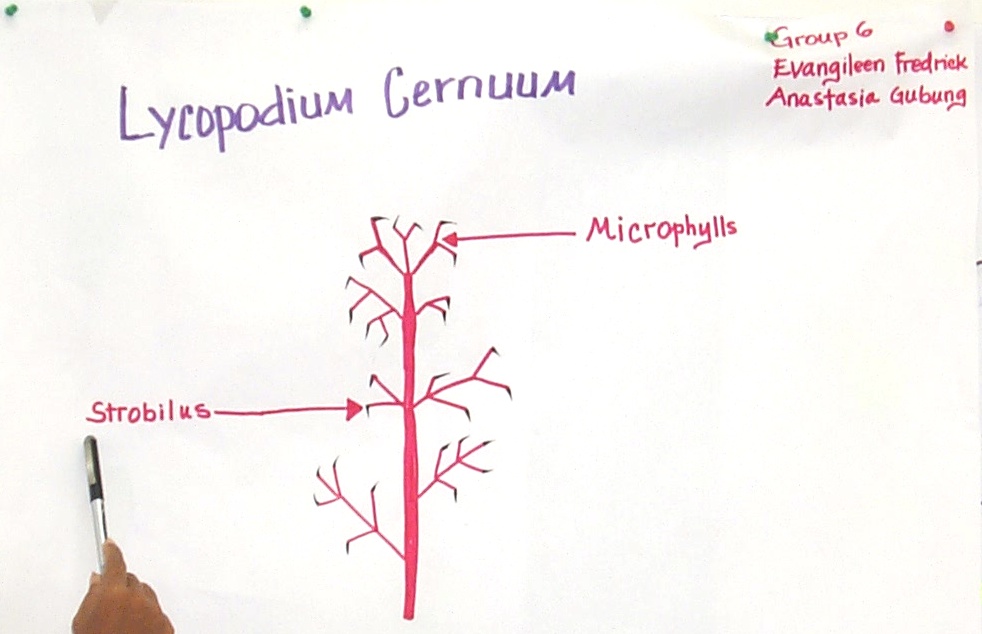
Marissa explains the life cycle of ferns with verve and excellent stage presence.
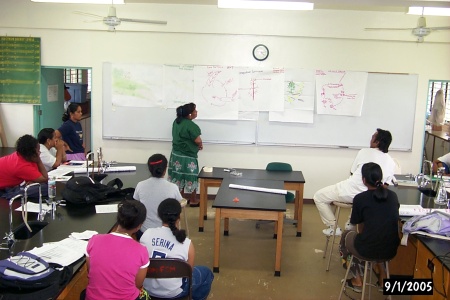
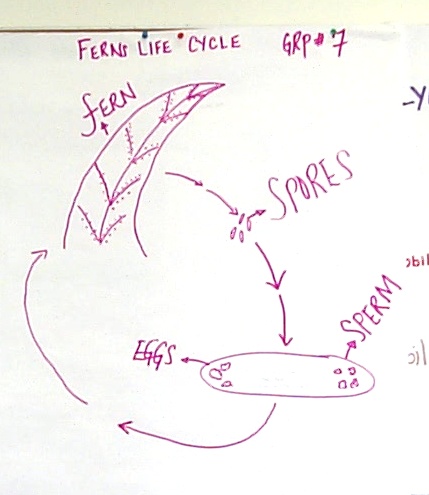
Masako sets up to explain the morphology of ferns with Sepe and Ginda.
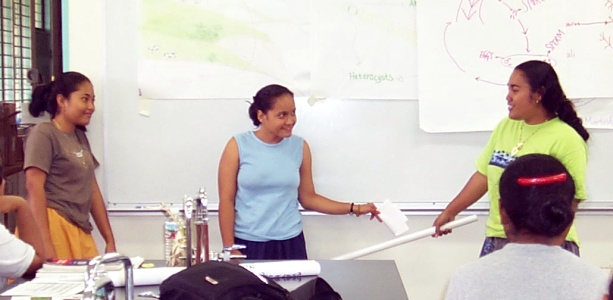
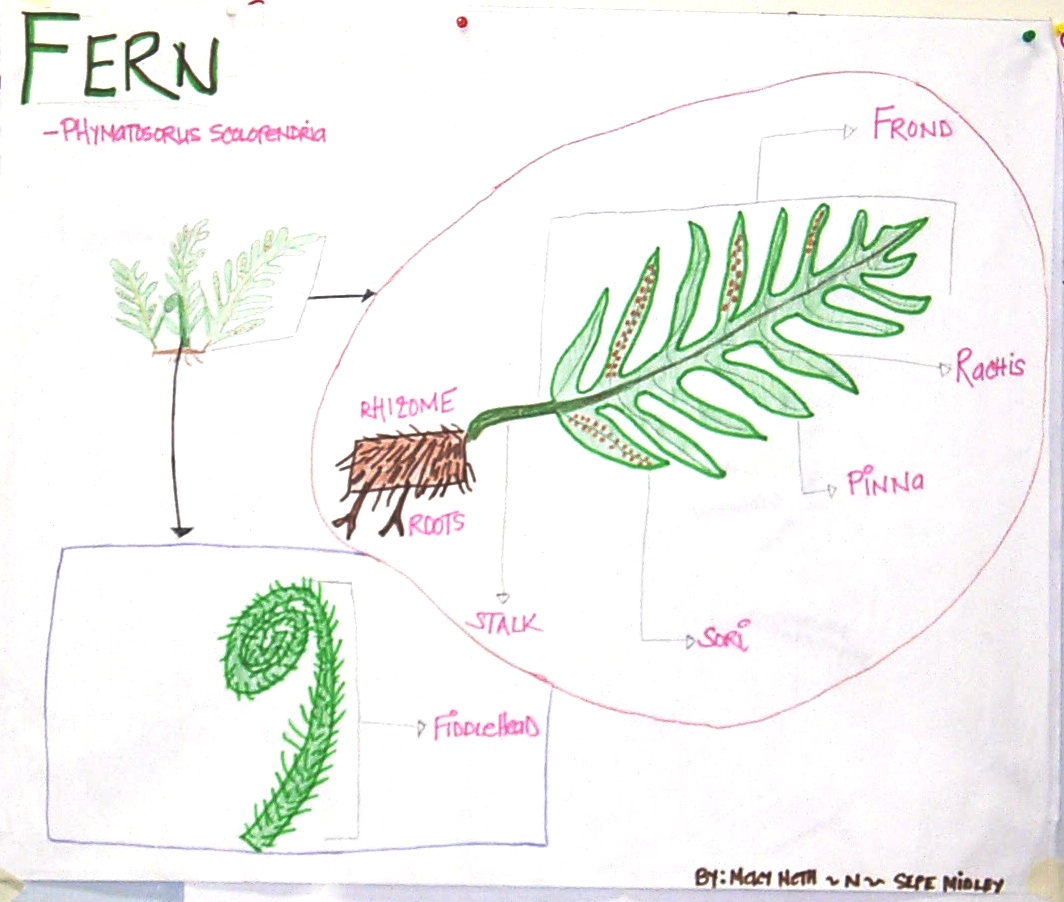
The last group consisted of individuals pronouncing the seedless vascular plants in their own language. Balkario did an excellent job, asking the students to repeat after him. He also cleared up the two names for Vittaria, they are actually the same with one being an honorific for the heron from which the plant derives its name. Meicy did original research on the names of the plants in her language, adding a name for Vittaria. Sophia doubled the number of Yapese names and, for the first time in the history of the class, explained the source of the names.
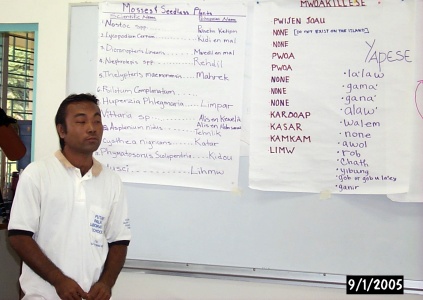
Links to large images of the sheets with the names on them:
Pohnpei, Mwoakilloa, Yap
Mortlocks
Kosrae
Ethnobotany • Courses • COMFSM